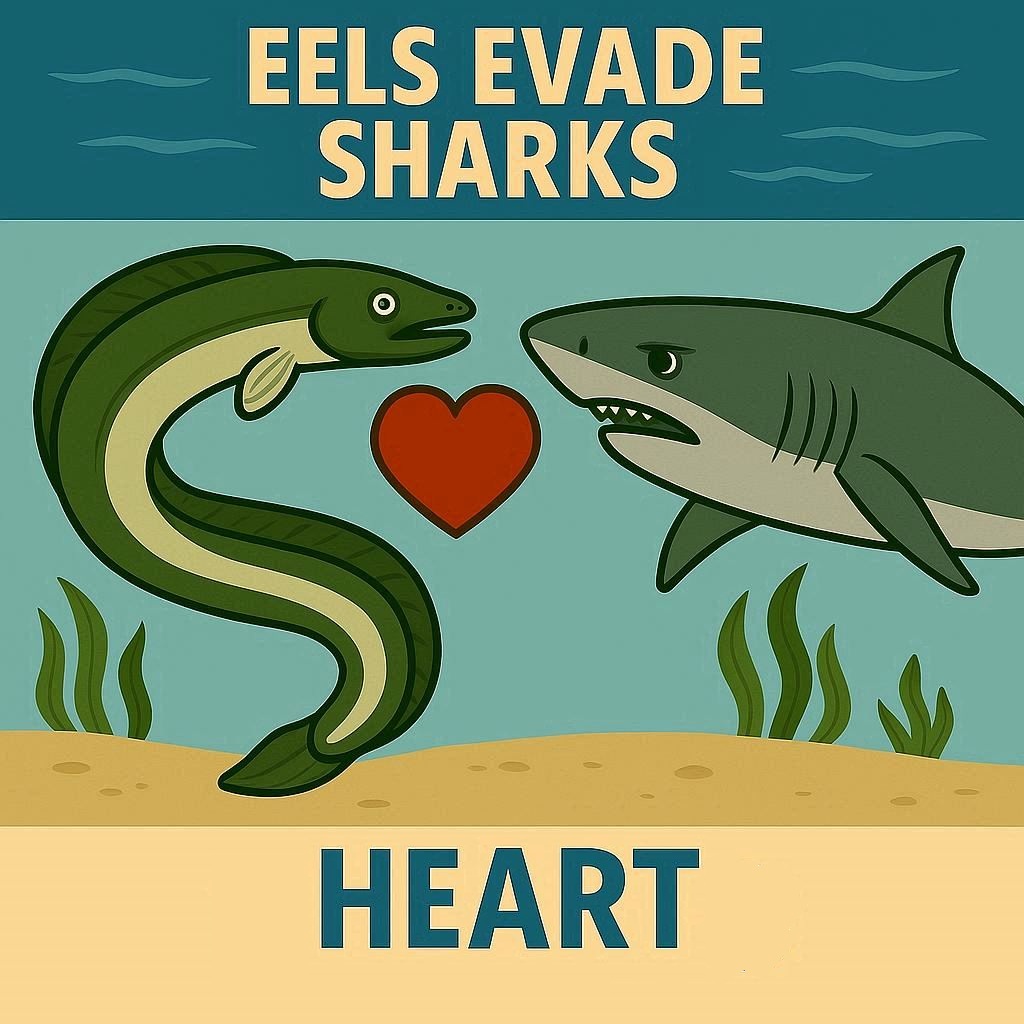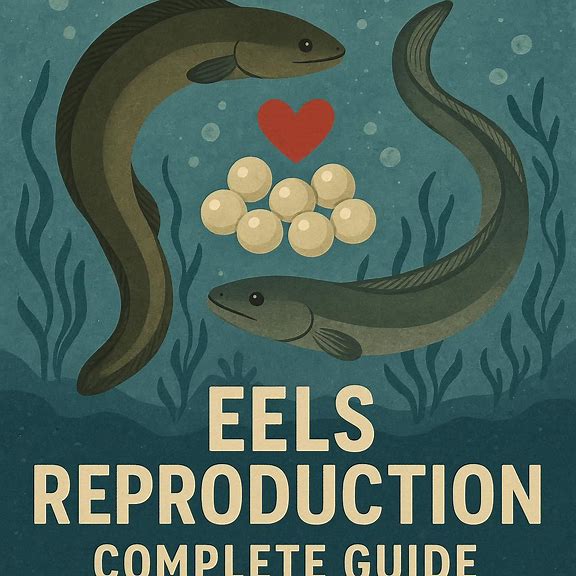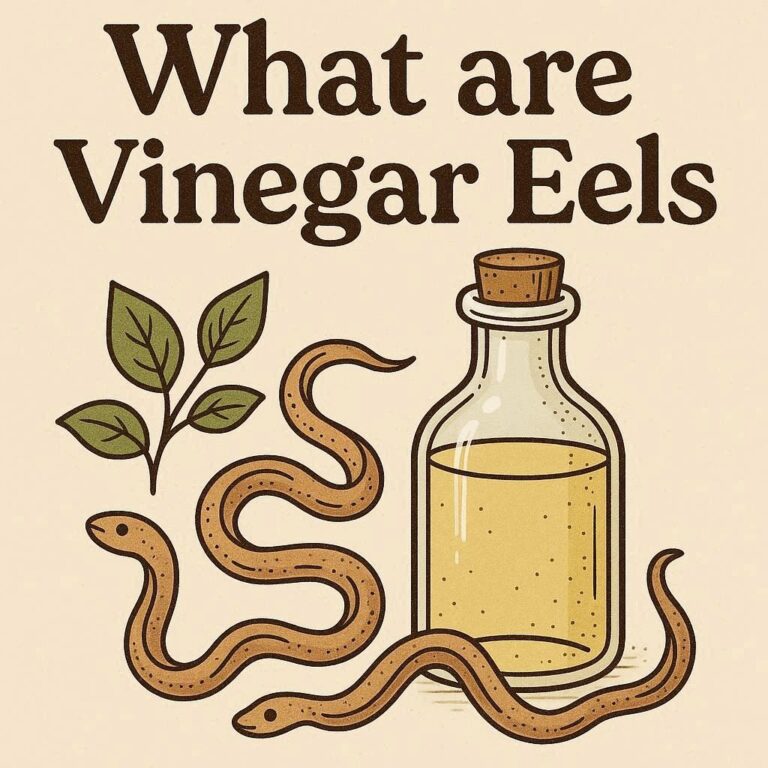
Parasitic eels living inside the heart of a shark may sound like something from a sci-fi movie, but this real and rare phenomenon gives us insight into the harsh and wild relationships found beneath the ocean’s surface. This article explains how snubnosed eels sometimes invade a shark’s heart, what scientists have learned about this strange occurrence, and why it’s a fascinating example of how animals can sometimes behave in totally unexpected ways.
What Are Parasitic Eels?
The main species involved is called the snubnosed eel (Simenchelys parasitica). These eels are deep-sea dwellers and can grow between 20 and 35 centimeters long. Normally, they are scavengers, feeding on dead animals they find on the seafloor. But every now and then, they have been found alive inside the body – and even the heart – of a shark.
The First Discovery: Eels Inside a Shark’s Heart
In 1992, fishermen landed a large shortfin mako shark off Montauk, New York. Scientists investigating how the shark had died got a huge surprise. Hidden inside the shark’s heart were two plump, young snubnosed eels. When oceanographers cut open the heart, they found both eels had stomachs full of blood – shark blood.
This was not just a fluke. About 15 years later, another shark species, a sand tiger, was found with eels inside its heart, body cavity, and muscles. In both cases, the eels appeared healthy and alive before being recovered and refrigerated by researchers.
How Do Eels End Up Inside a Shark’s Heart?
Scientists are not totally sure how the eels manage to get deep inside the shark, but the most likely explanation is that they take advantage of sharks that are sick, injured, or dead. If a shark is caught by a fishing hook and dangles close to the seafloor, eels might sense the opportunity. They probably enter through the gills or open wounds, then navigate to the shark’s heart by following the circulatory system.
Once inside, these parasites feed on shark blood. Evidence shows that the eels stayed alive there for long enough to fill their stomachs with clotted blood, proving they weren’t just passing through—they were well fed.
The Eel’s Impact on Sharks
When eels crawl into a shark’s heart, they don’t just snack—they can cause harmful changes. The heart may show clear damage not found in sharks without eels. Still, it’s not fully understood how long a shark can survive this type of invasion. The case studies tell us that the sharks were probably weakened or dying before eel infestation happened.
Scientists call this “facultative parasitism.” Eels don’t have to be parasites—they mostly live on the ocean floor, eating dead animals. But if they get the chance to crawl inside a big fish or a shark, they can switch to a parasitic lifestyle, at least for a while
Are Eels Always Parasites?
Snubnosed eels aren’t strict parasites. Most of the time, they act as scavengers. However, in some conditions, they are “facultative parasites,” meaning they feed on living hosts only if the situation allows. They don’t need to parasitize sharks to survive, but if the chance appears, they’ll burrow in and start feeding.
Scientists call these kinds of relationships “conditional parasitism.” Studying them helps researchers understand how true parasites might have evolved, since some animals only sometimes take advantage of living hosts.
Why Is This So Interesting?
It challenges people’s assumptions about sharks and ocean life. Sharks are often seen as the ocean’s toughest apex predators, but not even they are safe from parasites.
The discovery shows how animals can switch roles depending on their environment—sometimes scavenger, sometimes parasite.
Researchers are interested in these rare events because they could teach us how some species develop a parasitic lifestyle over time.
What Do These Eels Tell Us About the Ocean?
The ocean is full of creatures with complex relationships. Most animals try to maximize their chances of survival and will change behavior if needed. The snubnosed eel is a great example — it shows how creative and opportunistic life can be, especially in tough environments like the deep ocean floor.
How Do Scientists Study This?
Scientists rely on rare finds: dissected sharks, sometimes brought in by fishermen, sometimes found dead. They look for signs like damage in the organs, blood in the stomachs of the eels, and differences between affected and healthy sharks.
There aren’t that many cases in the records, but when one appears, researchers examine the shark’s environment and try to guess how the eels got inside. Sometimes, the sharks were caught on longline hooks, which may have made them easy targets for hungry eels lurking near the seafloor.
Could This Happen to Other Animals?
Most marine parasites are much smaller, like worms or tiny crustaceans. The snubnosed eel is unique in its ability to invade large animals and thrive, showing that even big predators can fall victim to surprising threats from smaller creatures.
Conclusion
Parasitic eels found inside the heart of a shark are rare, but they reveal a lot about nature’s creativity. These eels are not always parasites, but they take advantage of opportunities—sometimes living inside sharks’ hearts and feeding on blood. Their strange behavior helps scientists learn about marine biology, parasitism, and the ever-surprising relationships between ocean creatures. Even the mightiest animals can sometimes become victims in the struggle for survival.
Frequently Asked Questions
What kind of eel was found in shark hearts?
Snubnosed eel, scientifically called Simenchelys parasitica.
How do these eels get into the heart?
Scientists think they enter through the gills or mouth, then burrow into blood vessels and move into the heart.
Are these eels always parasites?
No, they usually eat dead animals on the ocean floor but turn into parasites when it helps them survive.
Does the eel kill the shark?
The eels can damage the heart and may contribute to the death of weakened or dying sharks.
How big are the eels found in shark hearts?
Around 21 to 24 centimeters (about 8 to 9 inches) long.
What did the scientists find inside the eels?
Their stomachs were filled with shark blood and no other food or parasites.
How often are eels found inside sharks?
It’s very rare—only a few cases have ever been recorded.
Why do scientists study these parasites?
To better understand ocean ecosystems and the evolution of parasitism.
Do healthy sharks get infested?
Probably not; most cases involve sharks that are already injured, dying, or dead.
Can these eels harm humans?
No, snubnosed eels live deep in the ocean and don’t interact with people.
References
- https://www.sciencealert.com/parasitic-eels-found-inside-the-heart-of-a-shark-and-we-will-never-unsee-the-pics
- http://coo.fieldofscience.com/2017/04/a-parasitic-eel.html
- https://gigazine.net/gsc_news/en/20230627-parasitic-eels-heart-shark/
- https://www.sciencedirect.com/science/article/abs/pii/S1546509817300328






